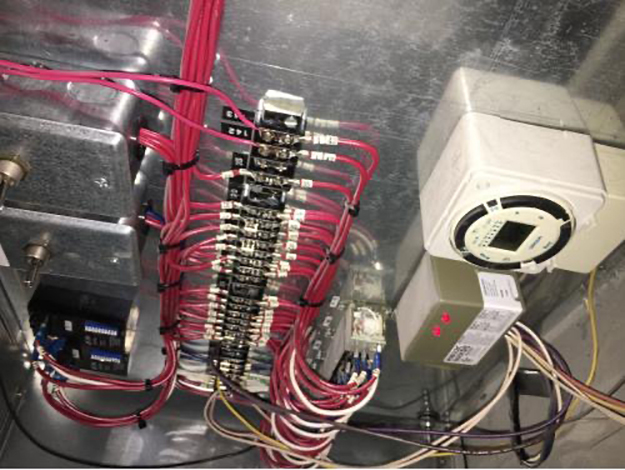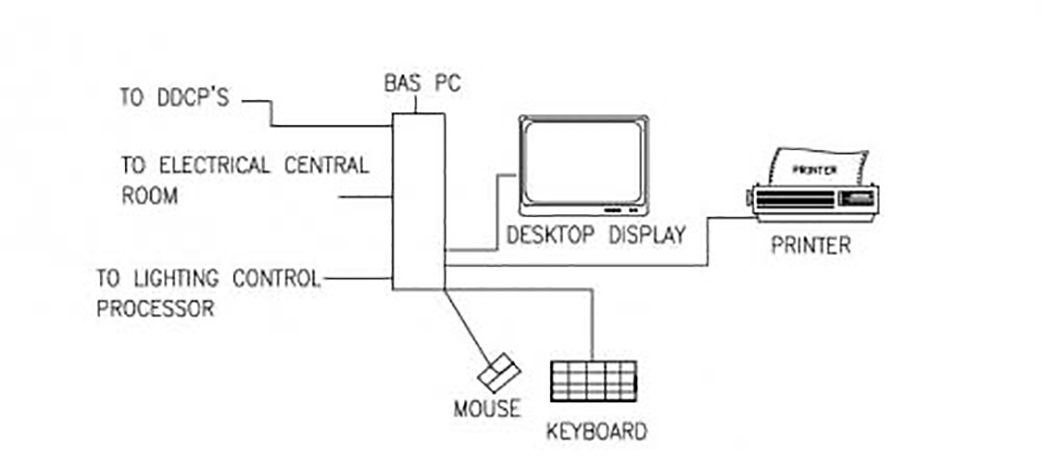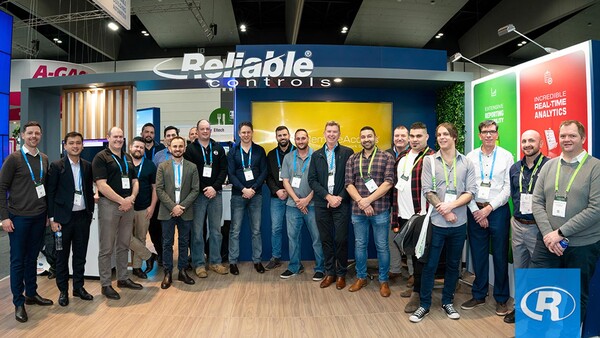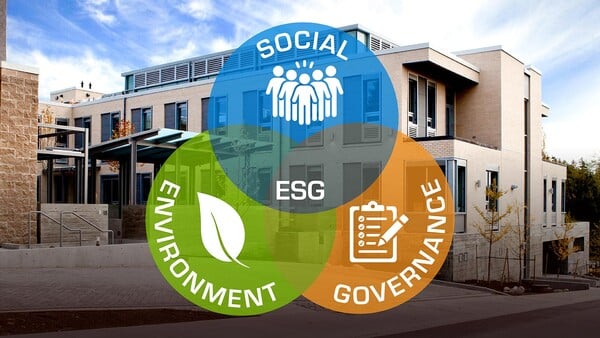How to attract, retain, and mentor women in building automation
How can we better support women and young professionals in building automation and engineering?





If you want to terrify engineers, tell them it’s time to audit their building automation system. Their thoughts will probably turn to the daunting task of evaluating myriad sensors, turning through dozens of graphic pages, or locating and evaluating the server. But their terror is misplaced. This article offers a guide to breaking down the process of auditing an existing building automation system and introduces helpful tools available through ASHRAE Guideline 13: Specifying Building Automation Systems.
The first question is an unorthodox one: Who’s the champ? More specifically, the engineer responsible for the building automation system must be able to clearly identify the person who will not only initiate the need for the project but also support its continuous performance over time. The person who issues the purchase order for a replacement project is not necessarily the one who will champion its success with the departments and vendors who will ultimately be involved in maintenance and operation.
With that in mind, the project champion may not be the same person who understands the true pain points of the system from the different perspectives of information technology, facility operations, and users, let alone the different levels at which an existing building automation system operates.
What the champion can do is assist the engineer’s endeavor to identify all stakeholders and their impact on the project’s success. This interaction is critical because the emergence of an upgrade project may be the first time many siloed departments have had to work together to accomplish an arduous task. A lack of collaboration can have lasting impacts on an organization’s key performance indicators.
The project champion is a fierce supporter of the survey and is likely the person most interested in its findings. This role is not by default interchangeable with the project sponsor but at times can be. Fortunately, various resources are available to assist the engineer in identifying the project champion and understanding the champion’s role and value for a massive undertaking such as a building automation system audit.
Critical areas that may need to be accessed, doors that may be locked during normal hours, or special access privileges that may be required for the audit can all be discovered early in the process with the help of the project champion. This person can also signal calls to action for virtual and in-person meetings with various departments.
You can extract valuable information from the pre-site survey activities of different departments. This is especially true if similar projects were performed in the past that cut a significant amount of time from the on-site activity.

Legacy building automation system panel.
Once the stakeholders have been identified and their contributions to the project’s success have been classified, the automation and controls consultant may still find it difficult to communicate the existing status of the current system and the approach needed for the different parties involved.
For example, the IT department may not be aware of the impact of the facility enterprise server on the automation system. Likewise, the building operations department may not realize the consequences of not being able to coordinate internet protocol controls with the IT department.
Classifying the current design of the building automation system into tiers can help focus the engineer’s efforts by categorizing the existing components that comprise the system and identifying key parties who can support each level. Different building automation tiers can be siloed, cross-departmentalized, and/or cross-functional, all of which should be considered when adopting proper communication management.
To help with a baseline in the vision of a tiered approach, ASHRAE Guideline 13 contains excellent visual diagrams. Multiple design configurations are discussed, one of which should fit the building to be audited.
These guidelines can be adopted to fit the system’s current architecture and provide a visual aid that details the key areas of an existing system in a tiered approach. A valuable activity would be spending the time to understand each tier and develop checklists that can organize questions in advance of auditing the condition of the equipment and devices. Consider that the architecture may differ from building to building; be prepared to review the system across multiple floors and levels. In a perfect world, as-built design drawings for both the automation system and the layout of the facility would exist, but you would be fortunate to find these in a replacement environment.
Tier 1: Enterprise level
This is the place where the server lies and where the IT department will have the most involvement and/or interest in a building automation system replacement. In the case that the control system operated as a legacy system on a standalone local area network, the impending replacement may be introducing this layer to a building that never had it.
Pre-auditing activity, such as requesting as-built documentation, should come with an evaluation of the existing server. This may trigger some important checklist-worthy questions. Has the server database software expired? If the server and database are supported by Microsoft, a more specific question would be: Has the current instance of the SQL server expired? Microsoft SQL has lists of several SQL licenses with different end-of-life dates.
For the site in question, the very same year the audit is taking place can be the same year the server residing on Tier 1 of the building automation system will no longer be supported. If the server was supported by the IT department, there is a chance this isn’t an issue at all because many IT organizations have license subscriptions with Microsoft. For a site where the server is supported by the building automation system contractor, who may be replaced by a different vendor with the same equipment, this scenario can have dire consequences.
This tier provides a situation for the engineer to introduce options as needed for a cloud service and/or remote accessibility levels. The notion that the server software is old or outdated is not one to scoff at, as many projects exist and are currently being designed that reference antiquated networking and computer hardware.
Another valuable question is: Where does the server reside? Physically? Virtually? It may come as a surprise that the tower and desktop used to play solitaire in the off-hours of a slow day is the very same hardware designated as the building automation system server. If no standard is in place, there is no need to be concerned. This situation presents a positive opportunity in the development of a new building standard, when the engineer is able to work together with the IT and facilities departments and center the server location according to the latest cybersecurity standards organized by the National Institute of Standards and Technology.
For an IT department that has never been engaged in conversations about managing an operational technology network, the idea of engaging a BACnet network that uses broadcast messages frequently with little to no security may pose as a barrier to a productive conversation.
This is where an opportunity exists to discuss BACnet Secure Connect, which has a method for transmitting data and device discovery over a network using common protocols that IT professionals are aware of, such as HTTPS, WebSocket, etc. The communications are also encrypted with BACnet Secure Connect using certificates and TSL1.3, which are common in the IT world.
Tier 2: Building level
This is the place where the supervisory controls reside. Facilities management personnel and third-party vendors may be required to be engaged at this tier. In preparation for the site audit, the different vendors and the equipment they control and/or monitor should be identified and listed in categories specific to the areas that may affect the audit. The associated communication trunks between their equipment and the supervisory controller can provide insight on much-needed design decisions, such as whether a protocol converter should be introduced or whether the current functionality of the supervised device is sufficient.
The engineer should be ready to ask for schedules for major equipment from the facilities team to help outline the operating parameters for the facility in the specification. These items may have a direct impact on the actual scheduling of the auditing activity because some equipment may operate only outside business hours.
A very common scenario is the use of globally broadcast points, such as outside air temperature and humidity. In many cases, the outdoor air temperature and humidity values are shared between different pieces of equipment for use in control strategies such as outside air reset for boilers or airside and water side economizers. It’s important to find out where these sensors and devices exist because their locations alone may deviate from the environmental conditions specified by their manufacturers.
Meters for equipment that resides in this tier may require additional communication, especially if they are located within highly critical electrical equipment that cannot suffer downtime.
Tier 3: Equipment-level sensors and actuators
At the Tier 3 level, an effort must be made to obtain as much information as available that details the original sequence of operations for all equipment. This information as a baseline helps identify the design intent and can help lay out the schedule along with the project champion and facilities team for the actual site audit once the most critical devices are identified.
In addition to this, a great way to compare the baseline sequences with the status of existing equipment is to request from the facilities team a “forced objects list” or “object override list” for critical equipment. These types of reports may require engagement with the existing building automation system vendor if the chief operator is unaware of how to generate them.
Their value comes in giving a snapshot of the different valves, differential pressure readings, variable frequency drive speeds, and temperature points to be overridden to keep the existing system operational. Every point in an existing building automation system that is overridden has a different story.
A preliminary review of this list can provide an agenda for a virtual meeting to unpack what underlying issues may have caused the objects to be forced to begin with. In some instances, a graphic page is generated to populate active forced objects to identify the troubles operators have in controlling equipment. This may accelerate the need to identify new sensors that should be incorporated into the building standard or detail a knowledge gap created by insufficient training.
A word of caution to an engineer looking to have these objects released on the day of the site audit: Make sure this is done in collaboration with the building management team. An auditing walkthrough could turn into a troubleshooting field trip when certain objects are released back into automatic control if the reason for the override extends past knowledge and touches on issues such as mechanical failures.
Another list worthy of preliminary evaluation is one that contains preventative maintenance reports from the building automation service provider. It is estimated that by properly tuning building controls, a commercial building can cut energy consumption by as much as 29 percent. The absence of a preventive maintenance strategy may trigger a broader conversation in which the building automation system engineer can get a grasp on what level of commitment the existing facility personnel can support. Previous maintenance reminders or evaluations can be incorporated into the new system. Do not be hesitant to ask for an opportunity to witness this maintenance should certain portions of the process affect the automation system and components.

Legacy building automation system design.
Once armed with insights at each tier of an existing building automation system and with clear identification of the parties involved, the efficiency of the walkthrough can increase substantially. Undoubtedly many questions will have made their way into the tiered checklists, but not all of them may be worth evaluating. Work with the project champion to assess each list at each tier to ensure certain questions are not already easily answered with a few page-turns of as-built documentation, a virtual meeting, or an invite to a SharePoint site.
Many engineers find themselves intimidated by an on-site review of actual instrumentation and devices. Make the best use of field photos for model numbers to engage manufacturer data installation sheets for a firm foundation of how certain sensors or devices should be installed. Whether evaluating the straight runs of duct before and after an airflow station, evaluating accuracy for existing sensor calibration or the length of the sensing element of a temperature sensor, a manufacturer-based instrumentation installation guide can equip the engineer with the tools to see the system as it should be. Deviations from the standards can be documented as part of the survey report.
The engineer should make sure access to a good camera is readily available. Camera phones of the current generation provide excellent picture quality so clear photos are available for the final report.
Field-ready instrumentation should also include handheld temperature- and humidity-sensing devices to assist in validation of existing sensors. Indoor air quality meters can also be brought if an existing sensor’s readings are in question. Quality ultrasonic flow meters are also very useful in evaluating the need for retaining or replacing what is existing.
Many times, a well-planned legacy system survey can be derailed due to a lack of focus and coordination between the engineer and the different facilities personnel at each tier. Central plant equipment rooms may require advance notice for access. Rooms that house building automation system server equipment may have additional devices that also require clearance.
The building automation system engineer should maximize the use of pre-audit meetings to come up with a priority list of equipment with input from required parties. The site personnel may have an idea of what they would like to see evaluated first, but it is up to the engineer to read between the lines and identify how the interactions of proposed priority equipment intersect with other systems that may also require access.
A day may not be enough for a field audit. In some cases the engineer may need to plan for multiple visits, and it will be up to the auditor to communicate this information in advance with a detailed schedule that can serve as a topic of discussion during progress meetings.
The engineer’s initial vision of the building automation system may have aligned with the project champion’s before the preparation and execution of the audit, but the findings after a thorough audit should help increase the accuracy of that vision. The most important considerations are the needs of the facility and stakeholders and how the legacy system can or cannot be used to satisfy those needs. Assessments can hinge on three categories:
The building automation system designer’s ability to be creative and conscious of the facility’s limitations and capabilities will help provide the proper recommendation to the client. Regardless of the approach, a well-planned and thorough audit of a legacy system can make the vision for the building automation system clear, concise, and future-enabled.
Do you design building automation systems? Our website offers free tools and utilities for building design and automation consultants. Make your life easier, save time, and save effort by registering for a Consultant account on our Reliable Controls Support Center.

How can we better support women and young professionals in building automation and engineering?

Here are five compelling reasons to partner with a local, factory-certified Reliable Controls service provider.

“I want an open system.” If you’re an HVAC professional, you’ve likely heard some version of this request during your career. But what does it mean?

Reliable Controls welcomes Oztech Intelligent Systems to its global network of Authorized Dealers.

As our dealer network grows, so does the demand for qualified workers. Can Reliable Controls help cultivate talent?

A few of our dealers share their experiences.

Learn how our building automation systems are designed to support you.

How does Business Development Executive Sean Roukey help our dealers grow and succeed?